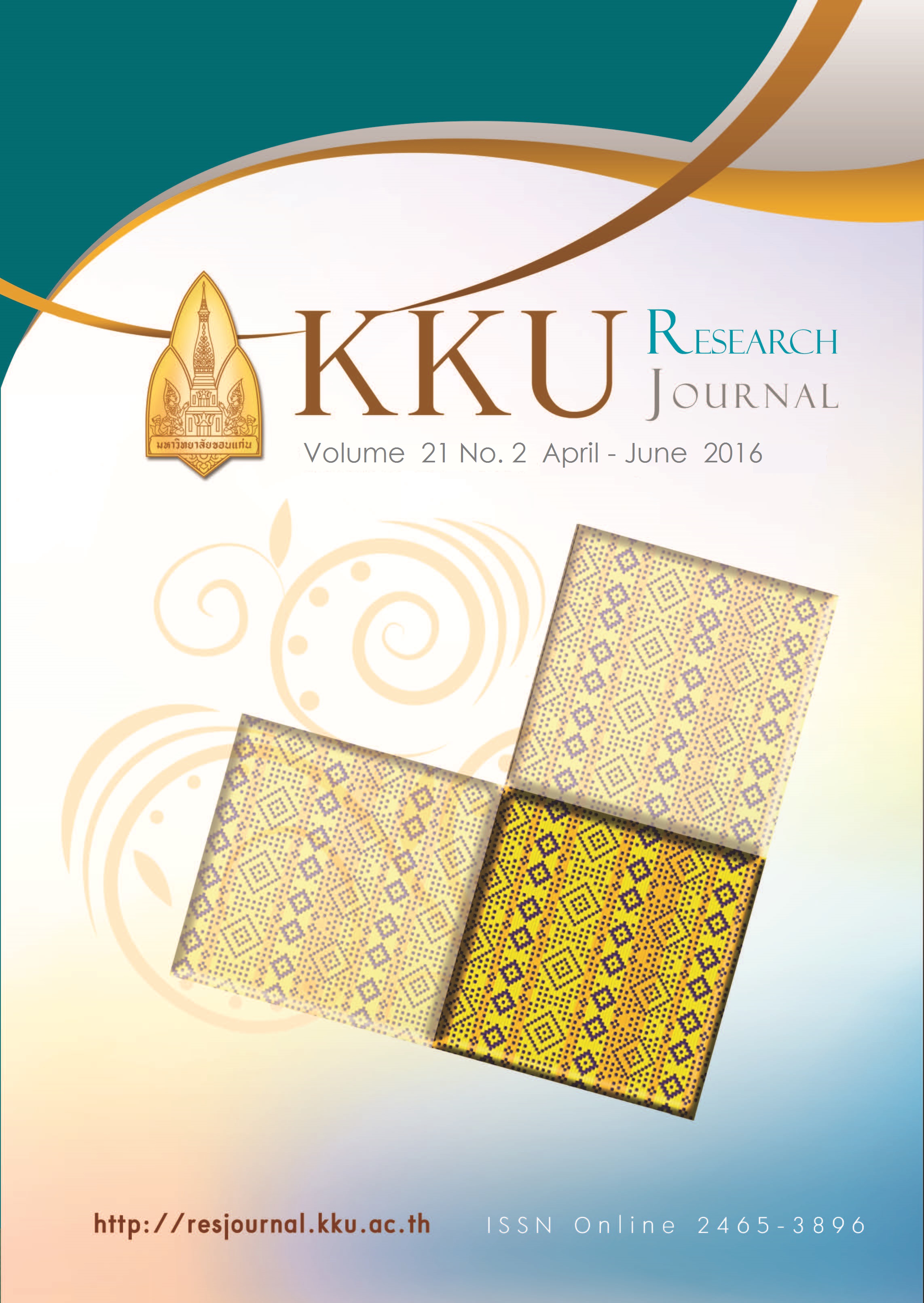Construction of Escherchia coli strain for producing recombinant antioxidative peptide from longan seeds
Main Article Content
Abstract
Antioxidants, substances that prevent damage from free radicals ,have originally been discovered in various natural sources including fruit seeds. In longan seeds, a potential antioxidative peptide with amino acid sequence as ISYVVPVYIAEITPKT - FRGGF, was found. In this research, to overcome protein hydrolysate preparation problems, genetic engineering was used to produce arecombinant version of this antioxidative peptide in Escherichia coli. For the easier genetic manipulation, the DNA fragment for encoding the target peptide was designed by containing 4 copies of the interested peptide and each copy was linked by a codon of Aspartic acid. After IPTG induction, the recombinant peptide was successfully expressed and purified. The recombinant peptide was verified by Endoproteinase AspN digestion and MALDI - TOF-MS. The antioxidant activity of this recombinant peptide will be further studied
Article Details
References
[2] Kahl R, Kappus H, Toxicology of the synthetic antioxidants BHA and BHT in comparison with thenatural antioxidant vitamin E. ZLebensm Unters Forsch. 1993 Apr 196: 329–338.
[3] Lindberg-Madsen H, Bertelsen G, Spices as antioxidants. Trends in Food Science Technology. 1995, 6:271-278.
[4] Torres-Fuentesa C,Contreras M, RecioI, Alaiza M, Vioque J, Identification and characterization of antioxidant peptides from chickpea protein hydrolysates. Food Chemistry 2015 Aug 180 :194–202
[5] Lin K,Yeh H, Lin S, Yang C, Tsai S, Tsai J, Chao P, Antioxidant activities of methanol extracts from selected Taiwanese herbaceous plants. Journal of Food and Nutrition Research. 2014 Jul 8:435-442
[6] Muanda F, Kone´ D, Dicko A, Soulimani R,Younos C, Phytochemical composition and antioxidant capacityof three Malian medicinal plant parts. Evidence -Based C omplementary Medicine 2011 July 2011 :1–8
[7] Hanna JN , McBride WJ , Brookes DL, Shield J, Taylor CT, Smith IL, Craig SB, Smith GA. Nuchanart R, Som kid S, Luksamee W,Chulabhorn M, Mathuros R, Jutamaad S, Evaluation of free radical scavenging an d a n t i t y r o si n a se a c t i v i t i e s o f standardized longan fruit extract.Food and Chemical Toxicology. 2006 Aug 45:328–336
[8] Samaranayaka AGP, Li-Chan ECY, Food derived peptidic antioxidants: A review of their production,
assessment, and potential applications. Journal of Functional Foods 2011, 3:229 -254.
[9] Zheng SR, Wang Y P, Yang YQ,Zhang J, Expression and i d e n t i f i c a t i o n o f a sm a ll recombinant beefy meaty peptide secreted by the methylotrophic yeast Pichia pastoris. African Journal of Microbiology Research . 2010 Dec 4: 2754-2762.
[10] Sambrook J,Fritsch EF, Maniatis T, Molecular cloning : a laboratory manual, 2nd ed. ColdSpring Harbor Laboratory, US; 1989.


